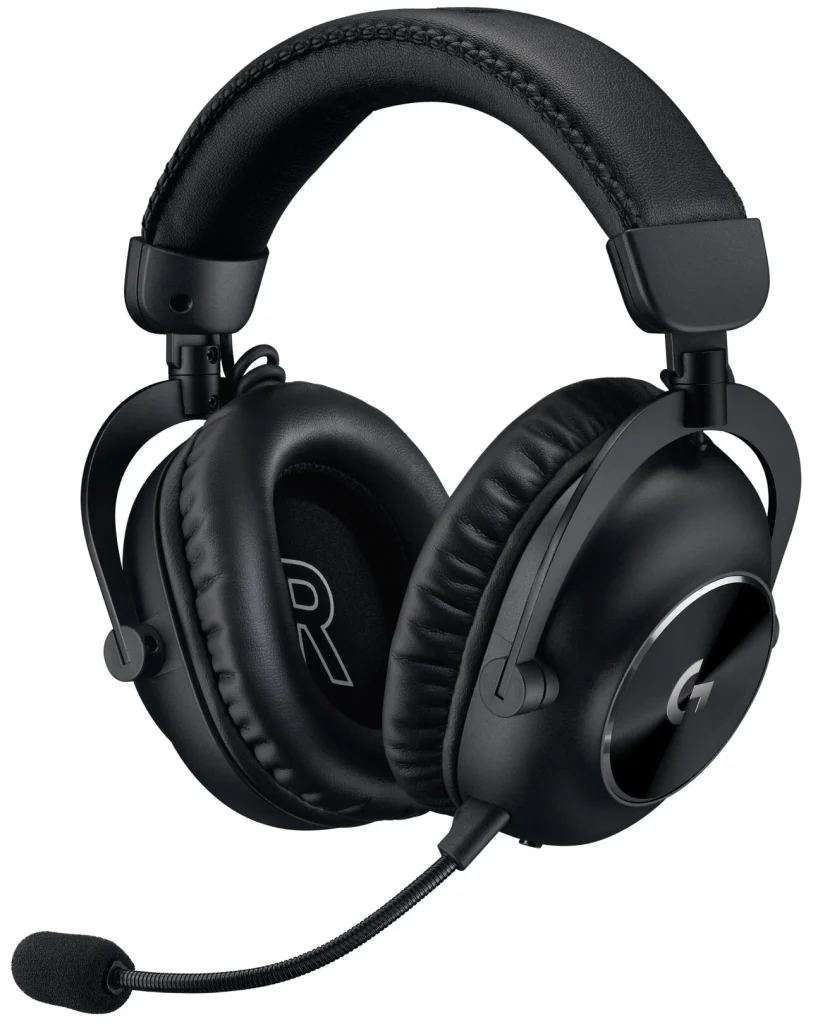The difference is only in one aspect: headphones usually do not have a built-in microphone, whereas a headset is not just headphones but also includes a microphone attached to them. Headsets can be either gaming-oriented (almost all gaming headphones have an integrated microphone) or universal. They have no technical difference; the distinctions lie in sound quality.
In reality, the difference between headphones and headsets is not very significant. More precisely, the difference primarily lies in the presence of a microphone. Everything else depends more on the model you choose than on whether you buy a headset or headphones. If you read articles on the Internet, you might get the false impression that headphones offer better sound quality, and therefore, if you want the best sound, you should choose headphones. However, this is not the case. As I mentioned, the sound quality will depend more on the model than on whether it includes a microphone. You can buy cheap headphones with mediocre sound. Or you can buy an expensive gaming headset with a microphone and good sound quality.
But there is one aspect that will always be relevant, at least in most cases. A headset with similar specs will always be more expensive than headphones. Simply because the microphone also costs money. Therefore, at least in theory, headphones at the same price will always offer better sound quality.
So, when choosing between headsets and headphones, I would advise paying more attention to the specific characteristics of the particular model.
What is considered a headset?
The most complex question, as always, is classification. So, we have headphones. We usually use this general term for anything reproducing sound and relating to our ears. Sometimes, headphones refer to headsets, earbuds, and earphones. But usually, headphones are two speakers connected by a band that you wear over your ears.
Now, about what a headset is. It’s simple. These are headphones with a microphone. The microphone can be detachable or not, flexible or not. But if you see headphones with a microphone, it’s a headset. But what if we’re talking about AirPods Pro Max? They also have microphones (several of them, some for noise control, others for capturing your speech). But these microphones are hidden in the headphone casing. Are such headphones considered a headset? Yes and no. While opinions on this may differ, I do not consider them a headset because a headset is anything with a visible microphone that goes as a separate part of the headphones. Models like the AirPods Pro Max are headphones with a built-in microphone.

So, let’s consider as a headset anything that has a built-in microphone but is made as a separate component, not integrated into the body.
Which is better, headphone or headset?
Now we smoothly transition to what’s better, headphones or a headset, and what the difference between them is besides the fact that one has a microphone and the other does not.
The first difference is bulkiness. Headphones are bulky enough, and a microphone makes headsets even more cumbersome. Of course, unless it is detachable. But in any case, even if you can turn it so that it is not near your mouth, it takes up additional space. If you often walk on the street with headphones, this is probably not the best addition to your headphones and will look quite strange.
The second difference is the price. A headset has a microphone, and it costs money. Therefore, if we do not consider individual cases, then on average, a headset with similar sound quality will always be more expensive than headphones. So, if you don’t use a microphone, it’s probably worth choosing headphones, not headphones.
The third thing worth knowing is the sound quality and connection features. You can connect any audio device in several ways, depending on the model: wired or wireless via Bluetooth. If you have wired headphones, they have a 3.5mm jack (usually, but there are also models with USB). And here’s the trick: in computers and laptops, a 3.5mm jack often has one of the functions: audio input (microphone) or audio output (speakers). Since headsets have only one 3.5 mm jack, the microphone will not work if you connect them. Headsets usually connect with a USB adapter, and the microphone works. By the way, the 3.5 mm jack performs both functions on smartphones and some laptops, so an adapter is unnecessary.

But if you have a Bluetooth headset, there are also features here. It will use one Bluetooth channel, through which both incoming sound (for speakers) and outgoing (from your microphone) will be transmitted. Given that the channel width remains the same, the headset leaves part of the range for the microphone sound. As a result, less bandwidth remains for the speakers, causing the sound to be compressed, adversely affecting sound quality (it will be worse than in headphones, where the incoming sound can occupy the entire channel width).
Should you choose a headset or headphones?
Oh, this is a question for you. Do you often use a microphone? If so, a headset would be the better choice. Where do you plan to use the headphones or headset? If you want to use it on the street, headphones are the way to go. But if you also often use a microphone, then it makes sense to consider a headset with a detachable microphone.
There’s no simple answer. It all comes down to your usage scenarios. Headphones are usually more focused on good sound quality, although this depends on the specific model and price. Headsets typically try to maintain a balance and are not intended for audiophiles. The standard rule is that headphones similar in tech specs will be cheaper than a headset simply because they save on the microphone.
Then, there are headphones with a built-in microphone. For example, Sony WH-1000XM4. These are Bluetooth headphones, but they have a microphone. However, many complain that its quality is not the best. So, this option is great if you only need a microphone on rare occasions.
Do headphones count as headsets?
“Headphone” is an umbrella term in English that encompasses all other types. Therefore, we often refer to all kinds of ear-worn audio devices as headphones, including headsets. So, headphones can be considered a headset with an attached microphone. Something like that.
In everyday language, we call everything “headphones,” even if it has a microphone. I am no exception and refer to my headset as “headphones.” But if your headphones do not have a microphone, you cannot consider them a headset. More precisely, you can consider your headphones anything you want, even a laptop; it just doesn’t make much sense.
What is the difference between headphones and headsets in Windows?
There used to be a funny distinction because a headset was a separate type of device. And if headphones, for example, were accidentally recognized as a headset, you could have problems connecting a microphone. Conversely, a headset could be recognized as headphones, and you couldn’t use the microphone. This problem does not exist, as Windows separately identifies the sound input device and the sound output device, so you encounter fewer issues.
However, problems can still arise, for example, when Windows does not see the microphone in the headset and you can’t select the microphone. In such a case, first, check if you use an adapter. If not, the problem might be that you plugged a 3.5 mm jack into an output socket, and you can only listen to the sound, not record it.





